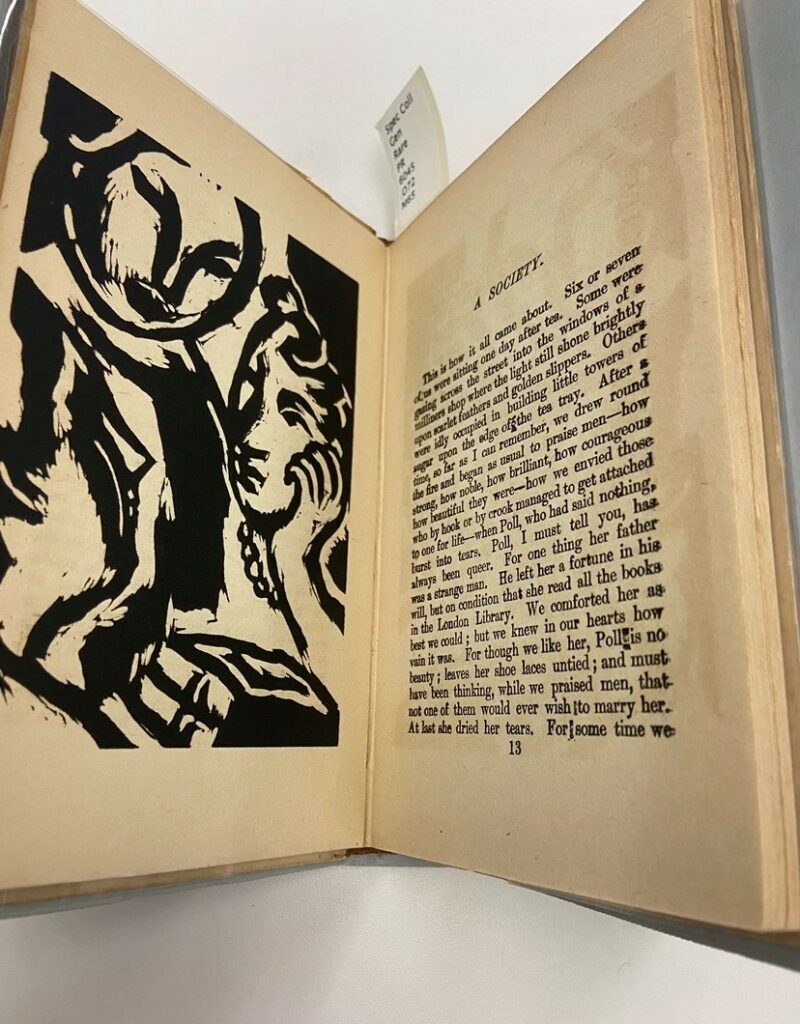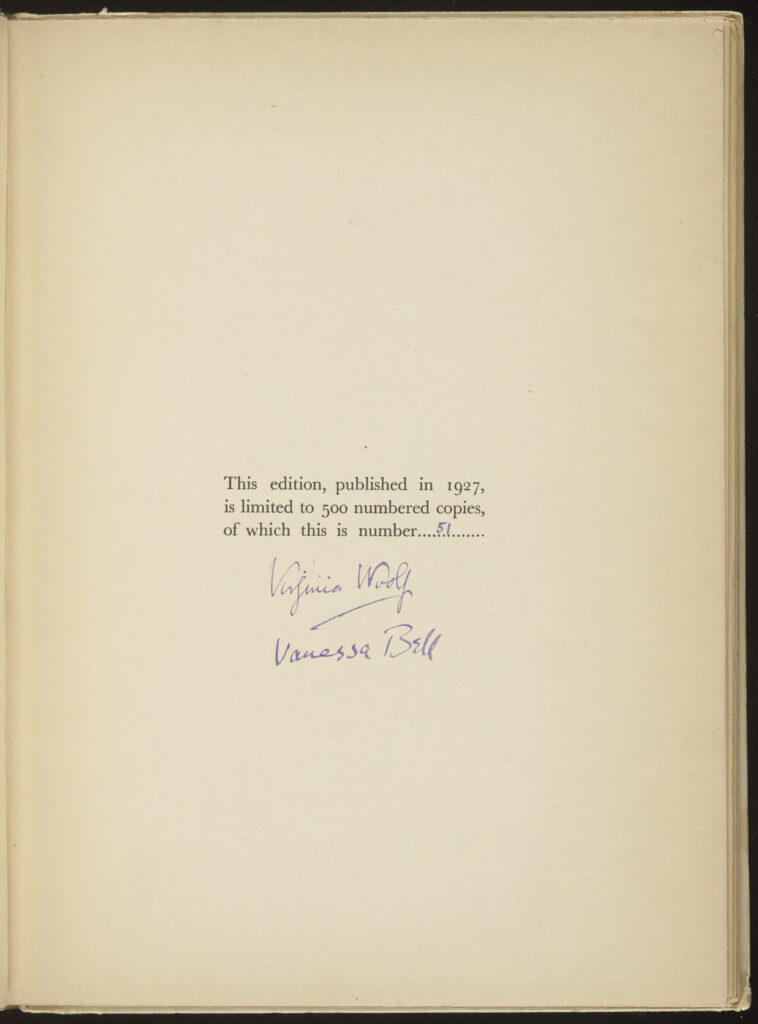By Cali Weber, ’24, English Major, Classical Civilizations Minor, Written as part of English 4940: Research Apprenticeship, Fall 2023
In the fall of my junior year, I took one of my favorite classes in the Ohio University English department; ENG 3490 History of Books and Printing. In this class, I was lucky enough to do a final project on Virginia Woolf’s Monday or Tuesday, a book kept in Special Collections, and one of Woolf’s earlier works that was printed by her husband Leonard Woolf. This project had thoroughly thrilled me, and I was excited to hear back from my professor, Dr. Joseph McLaughlin the following spring to see if I would be interested in doing a research apprenticeship with him in the fall. We were originally unsure of what to do, but after consulting Dr. Miriam Intrator, I was given the opportunity to create an Author Collection for Virginia Woolf’s books in the rare book collection. I was incredibly excited to begin this apprenticeship, as Woolf is one of my favorite authors, but what was even more exciting was realizing I would be creating the first female Author Collection in the Mahn Center.


Over the course of the semester, I went through 44 books, including our newest acquisition Kew Gardens, and analyzed them and listed all of the physical details I could in a spreadsheet. When the semester began, I immediately started with Kew Gardens, where I found the surprise of my life. This copy was listed 51/200 copies and was signed by Virginia and her sister Vanessa Bell (pictured to the left). When I got over the initial excitement and opened the book further, I was greeted with beautiful woodcuts done by Vanessa Bell, with some of the text being arranged around the art itself, which I had never seen before. Not only was Woolf’s writing important to me, but Vanessa’s art became just as meaningful, as she designed dust jackets for nearly all her sister’s books, and this collection is lucky to have 16 original dustjackets designed by Vanessa.

Vanessa and Virginia both had incredible impacts on one another. With the former being a painter and the latter being a writer, their fields often combined as Vanessa created art for her sister’s books and has given Woolf’s books a distinct visual style that pairs perfectly with Virginia’s distinct writing style.
Of course, the sisters often had issues as well, as sisters often do, which only made their relationship even more meaningful to me. Being an older sister, I recognize the role that sisters play in each other’s lives, and while sisters are prone to arguments, they are also able to work together to create masterpieces that wouldn’t be as beautiful without the contribution of both.

The sister’s relationship was fostered by the beginning of Virginia’s printing and publishing company which she and her husband began in 1917, the Hogarth Press. After the Press’s creation, all of Virginia’s novels were then published by Hogarth Press. This creates a rather intimate experience for the reader, as here Virginia serves nearly as the sole creator of the book. From the physical creation to the typesetting to the writing, and the printing, Virginia had a very intimate relationship with her novels. While she wasn’t able to print books for long due to her rising success, the availability of guaranteed publishing significantly changed her work and some of her most experimental and brilliant works may not be here today if she didn’t have the Hogarth Press.

This experience has changed the way I feel about books. I see the duality of them, their use as a form of education, and their existence as a physical object that was created, handled, and owned. While analyzing this collection, I came across many different inscriptions from previous owners and was able to find them with the information in their inscriptions. Some of the owners I found were Harlan W. Hamilton, an English professor who previously owned 3 of the books in the collection, Theodore Byard, an English musician, and Lady Leucha Diana Warner, an English socialite who likely had encounters with many members of Virginia Woolf’s circle, the Bloomsbury Group. Connecting with previous owners made me love the book as a physical object as well as a literary work even further. It was incredible to see people who owned the same books I loved and to see what kind of condition they were kept in, and how much the previous owners valued Virginia Woolf’s writing as much as me.

This opportunity changed my life. It was an incredibly connecting and intimate experience, and I view Woolf’s works on an even higher pedestal than I did before. To keep track of my explorations, I created an Instagram account for this project. It can be found at @virginiawoolfcollection_ou.